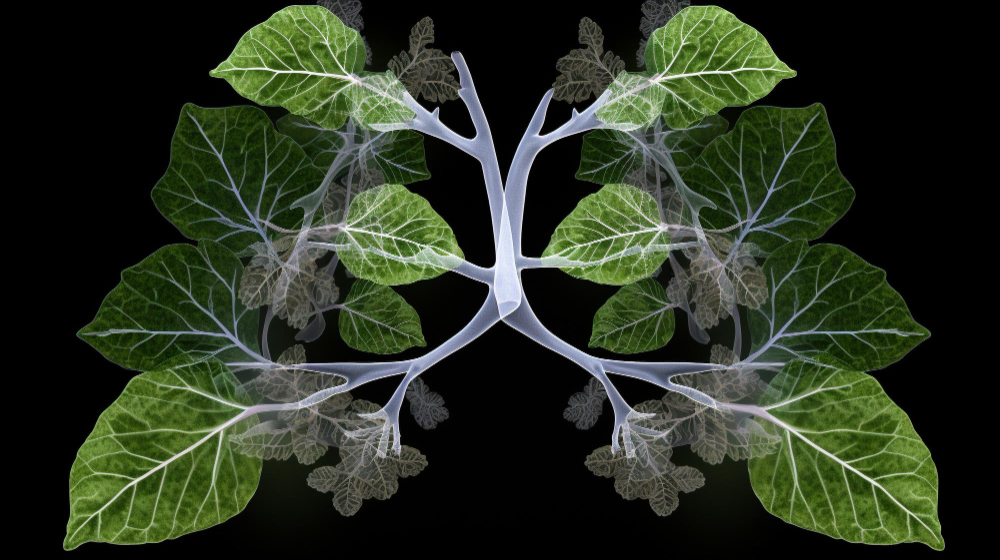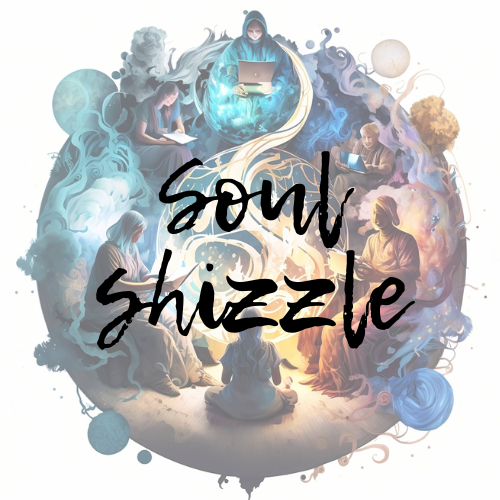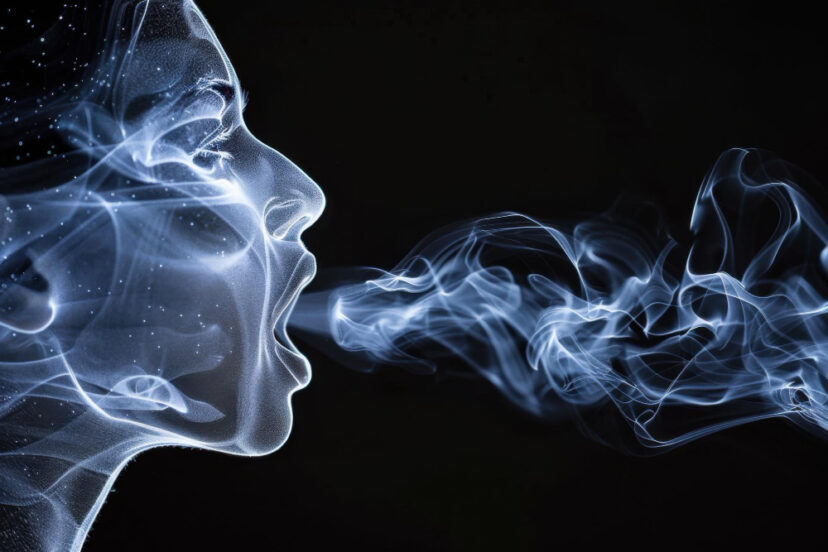Your Breath Is a Sacred Tool: How Conscious Breathing Transforms Your Energy and Awareness
Have you ever paused in the middle of your busy day and simply taken a deep breath? Go ahead—try it right now. Inhale slowly through your nose, feeling your lungs expand… and then exhale completely, releasing all that air.
What happened? Did you feel that subtle shift in your body and mind?
This simple act of conscious breathing—something you do roughly 20,000 times each day without thinking—holds transformative power that most of us never fully tap into. Your breath is not just keeping you alive; it’s a gateway to profound healing, spiritual connection, and heightened awareness that ancient wisdom traditions have recognized for thousands of years.
The Forgotten Power of Your Breath
In our fast-paced modern world, we’ve forgotten something fundamental: our breath connects us to life itself. It’s the first thing we do when entering this world and the last thing we do when leaving it. Between those moments lies a lifetime of breaths—each one an opportunity to either strengthen or weaken our connection to our true nature.
“When you own your breath, nobody can steal your peace,” an ancient proverb reminds us. Yet how many of us truly “own” our breath? Most of us breathe on autopilot, taking shallow sips of air that barely fill the top of our lungs, especially during times of stress—precisely when deeper breathing would serve us best.
This article explores the profound relationship between your breath and your wellbeing—physical, emotional, mental, and spiritual. You’ll discover:
• The fascinating science behind breath and its effects on your nervous system and brain
• How your breathing patterns reflect and influence your emotional state
• Ancient breathing techniques from spiritual traditions worldwide that can transform your energy
• How to use the breath as a tool for manifestation and spiritual awakening
• Practical breathing exercises you can incorporate into your daily life for immediate benefits
By the end, you’ll understand why your breath is not merely a biological function but a sacred tool for transformation that’s been with you all along, waiting to be rediscovered.
The Science and Spirituality of Breath: Where Two Worlds Meet
Your breath exists at a fascinating intersection—it’s both a biological process necessary for survival and a spiritual gateway revered across traditions. This duality makes it uniquely powerful.
The Biology of Breath: Your Body’s Invisible Conductor
From a scientific perspective, your breath is extraordinary because it’s the only bodily function that operates both automatically and under conscious control. This makes it a unique bridge between your voluntary and involuntary nervous systems—between what you can control and what happens beneath your awareness.
When you breathe, you’re not just exchanging oxygen and carbon dioxide. You’re:
• Regulating your heart rate and blood pressure
• Influencing your brain waves and mental state
• Affecting hormone production and release
• Impacting your immune system function
• Controlling your stress response
Research from institutions like Harvard Medical School has demonstrated that changing your breathing pattern can switch your nervous system from sympathetic dominance (fight-or-flight) to parasympathetic activation (rest-and-digest) within minutes. This is why taking deep breaths during moments of stress can quite literally calm your racing heart and quiet your anxious mind.
A 2018 study published in the Journal of Neurophysiology found that certain breathing rhythms can synchronize brain activity across regions, potentially explaining why breathwork can induce states of heightened clarity and awareness. Your breath, it seems, orchestrates your entire neurophysiology.

The Spiritual Dimension: Breath as Life-Force Energy
While modern science has only recently begun documenting these effects, ancient spiritual traditions have understood the power of breath for millennia:
• In yoga and Ayurveda, breath is prana—the vital life force that animates all living beings
• Chinese medicine calls it chi or qi—the fundamental energy that must flow freely for health
• In Hebrew, the word ruach means both “breath” and “spirit,” reflecting their inseparability
• The Greek word pneuma and Latin spiritus similarly connect breath to spiritual essence
These traditions recognize that breath is not just air moving through your lungs—it’s the tangible manifestation of life energy itself. By working with your breath consciously, you can influence this energy, directing it where needed for healing, clarity, and spiritual connection.
“When you control your breath, you control your mind and life force,” teaches the ancient text of Hatha Yoga Pradipika. This understanding forms the foundation of practices like pranayama (breath control) in yoga, which was developed not primarily for physical fitness but as preparation for deeper states of meditation and spiritual awakening.
How Your Breath Shapes Your Emotional Landscape
Have you ever noticed how your breathing changes with your emotions? Think about it:
• When you’re anxious, your breath becomes shallow and rapid
• When you’re relaxed, it flows deep and slow
• When you’re focused, it becomes steady and rhythmic
• When you’re angry, it becomes irregular and forceful
This connection between breath and emotion works both ways. Not only do your emotions affect your breathing pattern, but consciously changing your breath can transform your emotional state—often within seconds.
Breaking the Anxiety Cycle Through Breath
Anxiety creates a vicious cycle in your body: racing thoughts trigger shallow breathing, which reduces oxygen to your brain, which signals danger to your nervous system, which increases anxiety further.
Breaking this cycle is remarkably simple (though not always easy). By deliberately slowing and deepening your breath, you send a powerful message to your brain: “I am safe.” Your nervous system responds accordingly, reducing cortisol production and activating parasympathetic functions that promote calm.
Maria, a 42-year-old teacher who struggled with panic attacks, discovered this power firsthand: “I was skeptical that something as simple as breathing could help my anxiety. But the first time I used deep breathing during a panic attack, I was amazed to feel it subsiding within minutes instead of hours. It felt like I’d discovered a superpower that had been inside me all along.”
Using Breath to Release Emotional Blockages
Many of us carry emotional wounds and traumas that become stored in the body as tension, often manifesting as restricted breathing patterns. When we chronically hold our breath or breathe shallowly to avoid feeling difficult emotions, we create energetic blockages that can persist for years.
Deep, intentional breathing often brings these stored emotions to the surface for release. This is why people sometimes experience unexpected emotional releases during breathwork sessions—tears flowing, sudden laughter, or the surfacing of long-forgotten memories.
“The breath reveals what the mind conceals,” says renowned breathwork facilitator Dan Brulé. As your breath moves into areas that have been chronically restricted, it brings awareness, energy, and ultimately healing to those spaces.

The Breath-Energy Connection: Feeling Your Life Force
One of the most profound aspects of conscious breathing is the direct experience of energy it provides. When you breathe deeply and mindfully, you can actually feel the subtle sensations of energy moving through your body—tingling in your hands, warmth in your chest, pulsations along your spine.
This isn’t mystical thinking; it’s a direct experience available to anyone willing to pay attention. The sensation of energy moving with your breath gives you tangible evidence of what ancient traditions have always taught: that breath and life-force energy are inseparable.
Clearing Energy Blocks Through Breath
In many traditional healing systems, disease begins as an energy blockage before manifesting as physical symptoms. Your breath serves as a tool to identify and clear these blockages.
Try this simple practice: As you take a deep breath, scan your body and notice if there are places where the breath doesn’t seem to “go” easily. These restricted areas often correspond to emotional or energetic blockages. By gently directing your breath into these spaces—imagining your inhale flowing like water into these tight spots—you can gradually release the tension and restore energy flow.
Regular practice of this kind of breathing awareness can lead to profound shifts in your physical and emotional wellbeing, as energy pathways that may have been blocked for years gradually reopen.

Sacred Breathing Practices: Ancient Techniques for Modern Transformation
Across cultures and throughout history, specific breathing techniques have been developed to achieve particular states of consciousness and energy. Here are some of the most powerful practices you can incorporate into your daily life:
Diaphragmatic (Belly) Breathing: The Foundation
This fundamental practice activates your body’s relaxation response and forms the foundation for all other breathing practices.
How to practice:
- Place one hand on your belly and one on your chest
- Breathe in slowly through your nose, feeling your belly (not your chest) expand
- Exhale completely through slightly pursed lips
- Continue for 3-5 minutes, noticing how your body relaxes
The beauty of diaphragmatic breathing lies in its simplicity and effectiveness. Studies show it can lower blood pressure, reduce heart rate, and decrease stress hormones within minutes. It’s particularly powerful because it engages the vagus nerve—the main communication pathway of your parasympathetic nervous system.
“Diaphragmatic breathing was my gateway into understanding the power of my breath,” shares Jonathan, a former stress-management coach. “I went from someone who was constantly anxious to someone who could find calm in any situation, simply by returning to my breath.”
Box Breathing: For Mental Clarity and Focus
This technique, used by Navy SEALs and high-performance athletes, brings equilibrium to your nervous system and exceptional mental clarity.
How to practice:
- Inhale for a count of 4
- Hold your breath for a count of 4
- Exhale for a count of 4
- Hold the exhale for a count of 4
- Repeat for 3-5 minutes
The equal ratios in box breathing create a rhythm that balances your nervous system while the breath retentions help increase carbon dioxide tolerance, which can improve focus and energy levels. This practice is particularly effective before important meetings, difficult conversations, or anytime you need to perform under pressure.
Alternate Nostril Breathing (Nadi Shodhana): For Harmony and Balance
This yogic practice balances the left and right hemispheres of your brain and the masculine and feminine energies in your body.
How to practice:
- Use your right thumb to close your right nostril
- Inhale deeply through your left nostril
- Close your left nostril with your ring finger, release your thumb
- Exhale through your right nostril
- Inhale through your right nostril
- Close your right nostril, release your ring finger
- Exhale through your left nostril
- Continue this pattern for 5-10 minutes
The effects of alternate nostril breathing can be profound. Research has shown it may help balance the autonomic nervous system, improve cardiovascular function, and enhance respiratory endurance. Many practitioners report feeling a sense of mental balance and emotional equanimity after just a few minutes of this practice.
Breath of Fire: For Energy and Vitality
This Kundalini yoga technique generates heat, clears energy pathways, and awakens dormant potential.
How to practice:
- Sit with a straight spine
- Breathe rapidly through your nose with equal emphasis on inhale and exhale
- Allow your belly to pump naturally—in on exhale, out on inhale
- Start with 30 seconds and gradually build to 3 minutes
Breath of Fire increases oxygen delivery to your brain, stimulates your solar plexus (power center), and energizes your entire system. It’s especially helpful when you need a quick energy boost without caffeine or when you’re feeling mentally foggy.
Breath and Consciousness: The Gateway to Higher Awareness
Beyond its physical and emotional benefits, your breath serves as a bridge to expanded states of consciousness and spiritual connection. This is why breath awareness features prominently in meditation traditions worldwide.
Breath as an Anchor to Present Moment Awareness
One of the most profound aspects of breath is that it only ever happens now. You cannot breathe in the past or future—only in this moment. This makes your breath the perfect anchor for practicing presence.
When your mind wanders into worries about tomorrow or regrets about yesterday, your breath gently reminds you that life only ever unfolds in the now. By returning your attention to the sensation of breathing—the feeling of air entering your nostrils, the expansion of your lungs, the release of your exhale—you train your awareness to rest in the present moment.
This simple practice of breath awareness forms the core of many mindfulness traditions and has been shown to literally restructure your brain over time, increasing gray matter in regions associated with attention, emotional regulation, and perspective-taking.
The Meditative Breath: Gateway to Deeper States
As your breath becomes slower and more subtle through regular meditation practice, your brainwaves naturally shift from the beta waves of normal waking consciousness to alpha waves (relaxed awareness) and eventually theta waves (deep meditation). This progression allows access to deeper states of consciousness that remain inaccessible during normal waking activity.
In these expanded states, many meditators report experiences of:
• Profound interconnectedness with all life
• Dissolution of the separate self
• Timelessness and spaciousness
• Access to intuitive wisdom and creativity
• Deep peace and natural joy
“Following my breath in meditation has taken me to places within myself I never knew existed,” shares Maya, a meditation practitioner of 12 years. “There’s a vastness inside that opens up when I simply stay with my breath long enough—a sense of coming home to something much larger than my everyday self.”
Breath and Manifestation: Aligning Energy with Intention
Your breath doesn’t just transform your inner state—it can help manifest your desires by aligning your energy with your intentions. This connection between breath and manifestation appears in numerous spiritual traditions.
The Manifestation Breath Technique
This powerful practice combines visualization, breath awareness, and energy direction:
- Sit comfortably and take several deep, centering breaths
- Clearly visualize what you wish to manifest as if it’s already real
- On each inhale, imagine drawing in the energy needed to manifest your desire
- Feel gratitude and excitement as this energy fills your being
- On each exhale, release any doubts, fears, or resistance
- Continue for 5-10 minutes, feeling the reality of your manifestation
The science behind this practice involves several mechanisms. First, the deep breathing shifts your nervous system into a receptive state where limiting beliefs have less power. Second, the visualization combined with emotional engagement activates your reticular activating system (RAS)—the part of your brain that filters information—making you more likely to notice opportunities aligned with your intention.
“Using breath to energize my intentions completely transformed my manifestation practice,” reports Daniel, a holistic life coach. “Before, my visualizations felt flat and disconnected. Adding conscious breathing brought them alive with energy I could actually feel moving through my body.”
Integrating Sacred Breath Practices Into Daily Life
The true power of breathwork emerges not just from occasional deep practice but from integrating breath awareness throughout your day. Here are simple ways to make your breath a constant companion and ally:
Morning Breath Ritual
Before checking your phone or jumping into the day’s activities, spend 3-5 minutes with your breath:
- Sit comfortably at the edge of your bed or on a cushion
- Place one hand on your heart, one on your belly
- Take 3 deep, diaphragmatic breaths
- Set an intention for the day
- Breathe that intention into every cell of your body
This simple practice sets the energetic tone for your entire day, helping you move through the world with greater presence and purpose.
Transition Breaths
Use your breath as a reset button between activities:
- Before entering a meeting, take 3 conscious breaths
- After finishing one task and before beginning another, pause for a breath
- When switching roles (from work to home, for example), use your breath to clear your energy
These transition breaths prevent the stress and energy of one situation from bleeding into the next, allowing you to be fully present for each new moment.
The Sacred Pause
Several times throughout your day, set an alarm as a reminder to simply stop and breathe for 30 seconds. This “sacred pause” interrupts autopilot patterns and brings you back to conscious awareness.
During these pauses, simply notice:
• The quality of your breath
• The state of your body
• Your current emotional landscape
• The nature of your thoughts
This practice of regular conscious checking-in can dramatically increase your self-awareness and interrupt stress cycles before they gain momentum.
The Journey Home: Your Breath as Your Constant Companion
Your breath has been with you since your first moment in this world and will remain with you until your last. It has witnessed every joy, every sorrow, every triumph, and every challenge of your life. In this way, your breath knows you more intimately than perhaps anyone else ever could.
When life feels overwhelming, when your mind races with worries, when emotions threaten to consume you—return to your breath. It is always there, always ready to bring you back to center, back to yourself, back home to the present moment.
Your breath is not just a biological function. It is a sacred tool for transformation, a bridge between worlds, and a constant reminder of the miracle of being alive. Each breath offers an invitation to begin again, to reconnect with your true nature, and to remember the profound simplicity at the core of existence.
As you finish reading these words, take one more conscious breath. Feel the air filling your lungs, nourishing every cell in your body, connecting you to all living things that share this atmosphere. In this simple act of breathing, experience the truth that has been known by mystics and sages throughout the ages:
Your breath is sacred. And through it, so are you.
We may earn a commission for purchases made using our links. Please see our disclosure to learn more.




